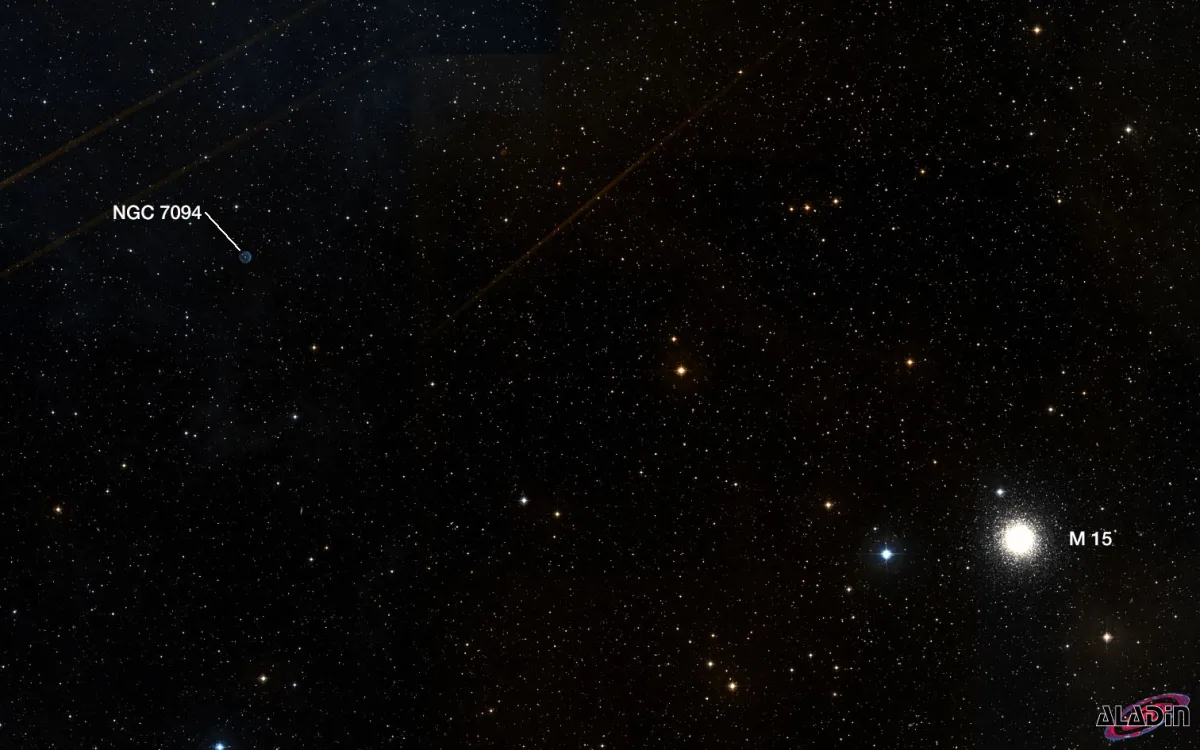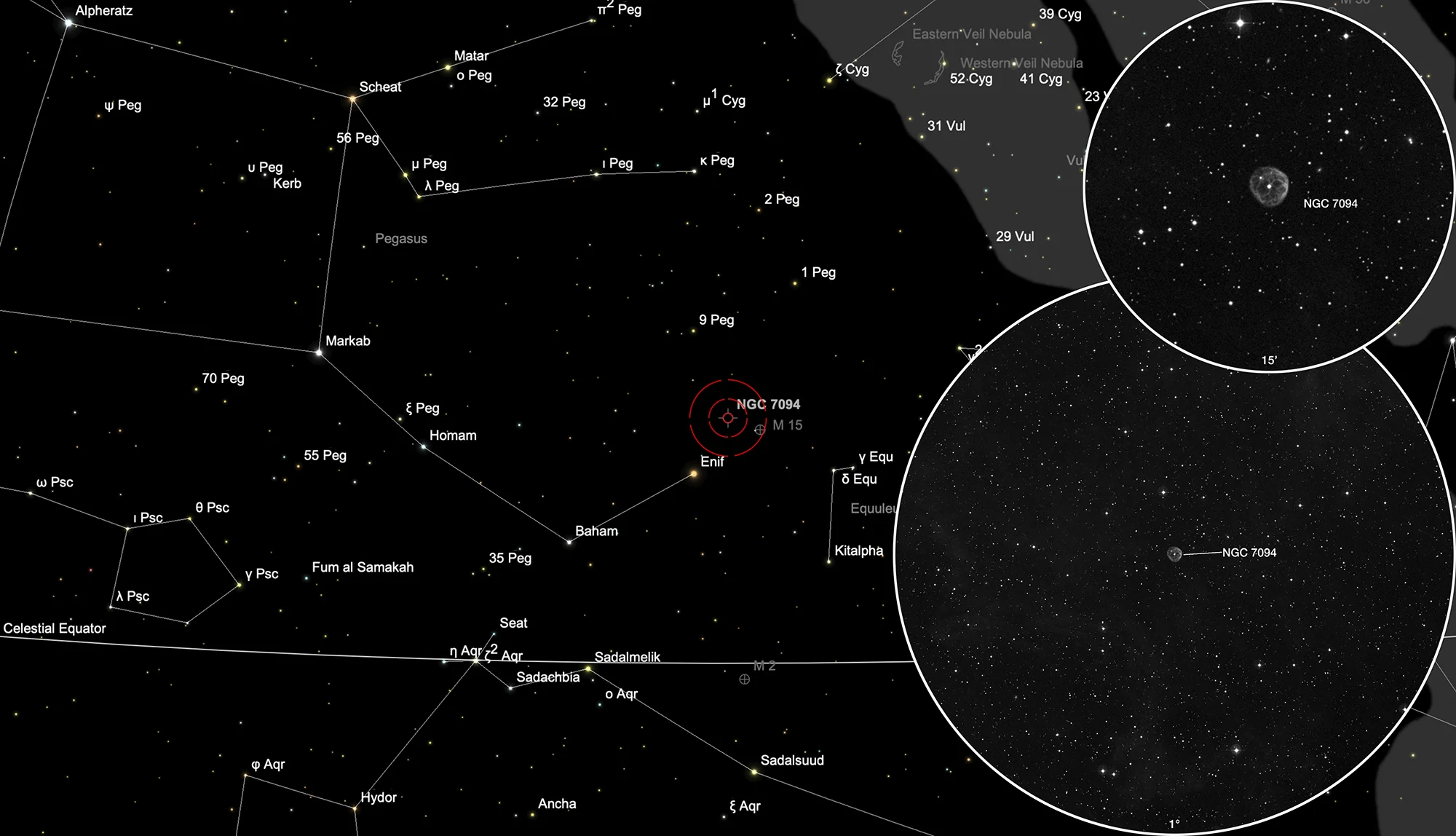Planetary Nebula NGC 7094

History
On 10 October 1884 the American astronomer Lewis Swift found this nebula using the 16 inch refractor at Warner Observatory in Rochester, New York. [277] John L. E. Dreyer added the object in 1888 as NGC 7094 with the description: «A star in most extremely faint nebulosity, very difficult.» [313]
Physical Properties
| Designations | PN G066.7-28.2: NGC 7094, PK 66-28.1, ARO 194, K 1-19 |
| Right Ascension (J2000.0) | 21h 36m 53s |
| Declination (J2000.0) | +12° 47' 18" |
| Dimensions | 94." (optical) |
| Distance | 1.07 kpc |
| Radial Velocity | -87.4 ± 40.6 km/s |
| Expansion Velocity | 45.0 (O-III) km/s |
| C-Star Designations | AG82 434 |
| C-Star Magnitude | U: 12.39, B: 13.58, V: 13.68 |
| C-Star Spectral Type | O(H) |
| Discoverer | KOHOUTEK 1963 |
Finder Chart

The planetary nebula NGC 7094 is located in the constellation Pegasus and lies about 2° east and 1° north of the easily found globular cluster Messier 15. Using the adjacent map, you can hop along the bright stars until you reach the spot where the PN is located. With an O-III or UHC filter, the nebula can be identified as a small round disk. On 15 August it is in opposition to the Sun and crosses the meridian at local midnight. The best time to observe it is April to January, when the constellation is at its highest at night.
